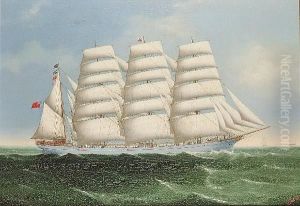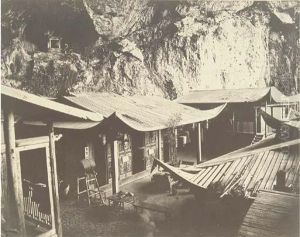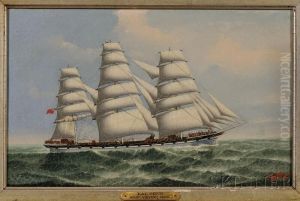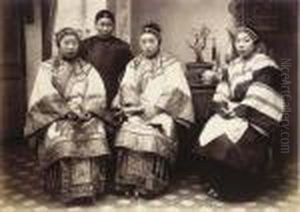Afong Lai Paintings
Lai Afong was a pioneering Chinese photographer whose work offers a unique and invaluable visual record of China and its people during the late Qing Dynasty. Born in 1839, near Guangzhou, China, Lai Afong's early life details are sparse, reflecting the era's limited documentation of individual lives, especially those outside the imperial court or foreign missionary circles. However, it is known that he was a self-taught photographer who mastered the art in the 1850s or 1860s, a period when photography was still relatively new and developing rapidly around the world. Lai Afong's significant contribution to photography is largely attributed to his founding of Afong Studio in Hong Kong around 1859, a time when the city was becoming a hub of international trade and cultural exchange.
Afong Studio quickly gained a reputation for the high quality of its portraits and landscapes, catering to both Chinese and foreign clientele. Lai Afong's work is characterized by its meticulous composition, attention to detail, and the ability to capture the essence of his subjects, whether they were bustling street scenes, serene landscapes, or individual portraits. He was among the first to document China's landscapes and daily life, providing a window into the world of 19th-century China that had previously been largely inaccessible to the outside world.
Throughout his career, Lai Afong traveled extensively across China, capturing images that range from the Pearl River Delta to the Great Wall. His photographs not only bear witness to the beauty of China's landscapes but also to the monumental changes and events of the era, including the aftermath of the Opium Wars and the beginnings of modernization processes under the Self-Strengthening Movement. Lai Afong is also noted for his innovative techniques, which included the early use of photographic manipulation and montage.
Afong Studio remained a prominent and influential establishment in Hong Kong until Lai Afong's death in 1890. His legacy, however, extends far beyond his lifetime, as his photographs continue to be a primary source for understanding Chinese culture and history of the period. They are prized by collectors and historians alike and are featured in museums and private collections worldwide. Lai Afong is remembered not only as one of China's first and most important photographers but also as an artist who bridged cultural and historical divides through the lens of his camera.



